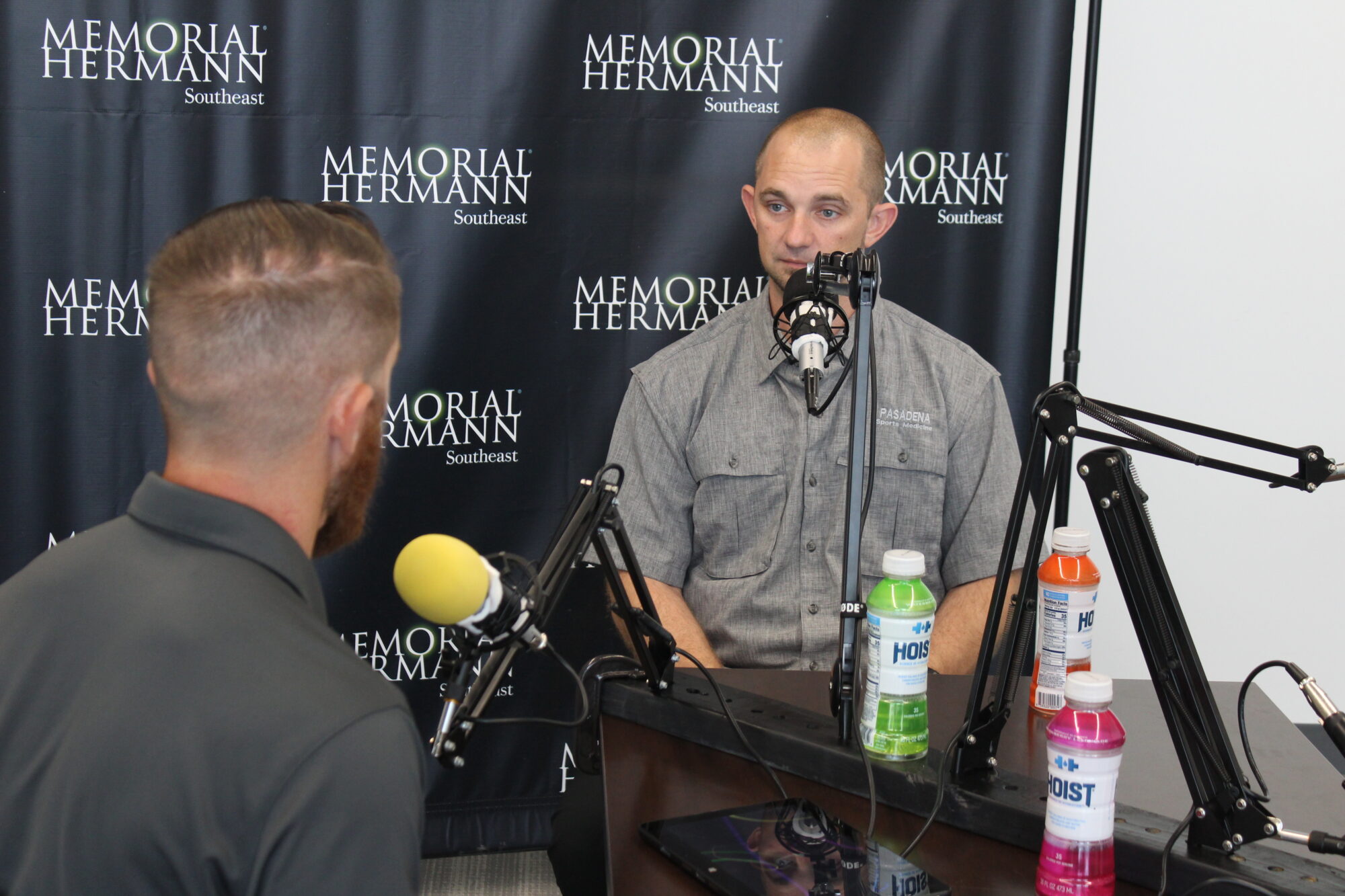Podcast: Play in new window | Download
How common are facial injuries occurring?
-20-40% involve face
It could just involve something as simple as a slap in the face.
On-field assessment allows you to hone in on a specific injury.
Where does your mind go during the initial assessment for a facial injury? What are you looking for?
-1st talking and airway
Ecchymosis is present, when should you refer?
-Racoon eyes (both eyes) – vasal or skull fracture possibility
-Battle sign – ecchymosis behind the ear. Basal or skull fracture possible.
Skull fractures is surgery common or just monitor?
-CT to check the brain and for fracture
-not all require surgery
Mandibular fractures. Are we looking at surgery?
-Depends on the type of fracture. Not displaced can monitor and have on a soft food diet.
-High protein foods for high-level athletes so they can still get nutrients
Healing time during a mandible fracture, what are they allowed to do?
-As tolerated
-Lift, light exercise
-nothing stressful that they clench their jaw.
Difference between RTP. What are you looking for, for an athlete returning to play in a contact sport?
-Depends on sport and position.
-2-3 months, but it depends on how the athlete is healing and what their position entails.
Regulations in rugby. They aren’t allowed to wear certain masks?
-Protective gear cannot be a hard shell.
-Lots of pads and tape.
-Can have a mouth guard.
TMJ dislocation. What is the relocation process?
-Usually down and out. Put posterior pressure and push back in.
-Wear gloves and roll gauze on your thumbs since you have to push on the bottom teeth.
-Relocated the TMJ, but chose to not let him back in the game.
Follow up for TMJ dislocation?
-Follow up with them.
-Ask about symptoms, can lead to who they need to be sent to.
-Typically if it is back in and they are good, you can watch them.
Maxillary fracture. Seen one clinically?
-Common from motor vehicle injuries
-Never seen one from sport.
-Could maybe see one from a combat sport.
Splint a lefort fracture.
-Bartans split technique.
Key signs of a zygomatic fracture?
-Big swelling over cheek bone
-Dent in the cheek bone
Nasal fracture, when can you get them back to sport?
-Depends on sport/position
-usually 4-6 weeks
-Need to be pain free and breathe ok.
Mask wearing can be just to be for the athlete to have comfort and prevent another injury.
Fix nasal bone once done with sports.
Nasal bleeds. At what point should you call EMS if you cannot control a nosebleed?
-Symptoms of lightheadedness or dizziness. Headache or nauseous
Manage a nosebleed if someone is dizzy?
-Tilt and pinch. Try sitting, not just lying down.
Orbital injuries
Eyelid injuries – refer to an ophthalmologist. ER have on call?
-Have to go to an ER connected to a hospital because they will have one on call.
-The movement and tear ducts are something to consider.
AT should control bleed and refer?
-Control bleeding, and cover then refer to ER.
What should the AT’s actual action be when referring an athlete to the hospital for an orbital injury?
-ABC’s
-Neck
-Then they can sit up and you can evaluate.
Most orbital injuries something you would refer to ER?
-Corneal abrasions can be sent to urgent care.
-Foreign body could go to an urgent care
-ER globe rupture, eyelid laceration, loss of vision
Ear injuries
Ear magnets
-Put on the outside ear to squeeze which can help prevent cauliflower ear.
How long do you have to drain cauliflower ear?
-Hematoma is the beginning, cauliflower ear is when you don’t take care of it.
-As soon as possible when it is still fluid/squishy. Can be within the next couple of days.
The most common head injury seen is a concussion.
All five senses are on your head. Want to check all 5 in your assessment.
Contact Us
Jeremy Jackson – MrJeremyJackson on Twitter, SportsMedicineBroadcast on IG, FB
These people LOVE Athletic Trainers and help support the podcast:
Frio Hydration – Superior Hydration products.
Donate and get some swag (like Patreon but for the school)
HOIST – No matter your reason for dehydration DRINK HOIST
MedBridge Education – Use “TheSMB” to save some, be entered in a drawing for a second year free, and support the podcast.
Marc Pro – Use “THESMB” to recover better.

